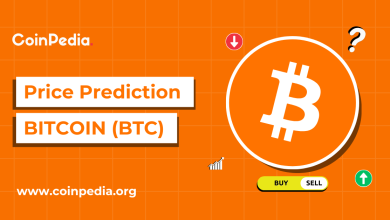
Interoperability in the context of blockchain refers to the ability of different networks to talk to one another: to exchange data seamlessly. In this area, there has been a great deal of progress in recent years as cross-chain technologies have come online.
From Layer-2 networks and sidechains to interoperability bridges and relay chain-based schemes, web3 developers are striving to connect isolated blockchains for the benefit of end users and the industry as a whole.
The dream of interoperability of course extends to Bitcoin, the ‘peer-to-peer electronic cash system’ envisioned by the mysterious Satoshi Nakamoto. As far back as 2015, the BTC RELAY project realized cross-chain asset transfers between the Proof-of-Work chain and Ethereum using sidechain technology. Later, Liquid became the first federated sidechain deployed on Bitcoin.
Fast-forward to today and there are a number of projects styling themselves as Bitcoin ‘interoperability layers.’ It’s worth taking a closer look at them to get a sense of the network’s direction of travel, particularly as competition between blockchains intensifies.
Three Top Bitcoin Interoperability Solutions
exSat is a Bitcoin scaling solution that functions as a Docking Layer, one that extends the data consensus of the Bitcoin ecosystem by favouring a hybrid that combines Proof of Work (PoW) and Proof of Stake (PoS). In so doing, exSat bridges the smart contract gap that exists between Satoshi’s network and its main rival, Ethereum.
Another goal of this out-of-the-box solution is to “drive multichain interoperability by intent-centric omnichain dApps.” In other words, to pave the way for dApps that are not isolated on a single network.
While there has been a flurry of Bitcoin-based Layer 2s that complement the main network, exSat is positioned somewhere in the middle – Layer 1.5 – enabling a continual stream of assets and data across disparate scaling solutions. Ingeniously, exSat synchronizes block data between Bitcoin miners and its own network to broaden the former’s data consensus. Thus, miners become Synchronizers. Such is the promise of exSat, it has already welcomed BitTrade and Spiderpool as validators.
MAP Protocol is another so-called Bitcoin interoperability layer created to leverage the security of the PoW network while extending its capabilities. Built on ZK light-client tech, the omnichain extension protocol operates a peer-to-peer model, eliminating vulnerable third-party entities like bridges from cross-chain transactions.
Effectively a Layer-2, MAP Protocol doesn’t just facilitate cross-chain transfers of cryptocurrency but also enables interoperability of on-chain storage and computing resources, so that dApp devs can utilize services across multiple networks. GameFi devs, for example, can utilize the protocol to ensure their assets are tradable and interoperable on all chains, with interoperability also extending to all aspects of game state, logic, and on-chain.
A third protocol worth mentioning here is XRGB, which provides an interoperability mechanism designed for BTC-based assets (BRC20s) and Layer 2s.
In a nutshell, XRGB lets assets from the Bitcoin network be transferred to ERC404 standard tokens and NFTs, the latter being an experimental Ethereum token standard that merges the properties of fungible (ERC-20) and non-fungible tokens (ERC-721) into a hybrid format. Users can leverage XRGB to transfer their BRC20s across a range of networks including Ethereum, BASE, BNB, X Layer, Linea and Merlin.
Explosive Growth
Bitcoin’s Layer-2 ecosystem continues to attract significant inflows as innovators seek to capitalize on the network’s reputational value, large user base, and strong security.
Once considered the white whale of the blockchain world, interoperability is no longer an elusive concept but a tangible reality offered by multiple platforms.
From a Bitcoin maximalist’s perspective, it is hoped that interoperability solutions continue to expedite the flow of liquidity into the ecosystem, strengthening the network, improving UX, and encouraging developers to build on Bitcoin while enjoying the benefits of free movement.
Trust with CoinPedia:
CoinPedia has been delivering accurate and timely cryptocurrency and blockchain updates since 2017. All content is created by our expert panel of analysts and journalists, following strict Editorial Guidelines based on E-E-A-T (Experience, Expertise, Authoritativeness, Trustworthiness). Every article is fact-checked against reputable sources to ensure accuracy, transparency, and reliability. Our review policy guarantees unbiased evaluations when recommending exchanges, platforms, or tools. We strive to provide timely updates about everything crypto & blockchain, right from startups to industry majors.
Investment Disclaimer:
All opinions and insights shared represent the author's own views on current market conditions. Please do your own research before making investment decisions. Neither the writer nor the publication assumes responsibility for your financial choices.
Sponsored and Advertisements:
Sponsored content and affiliate links may appear on our site. Advertisements are marked clearly, and our editorial content remains entirely independent from our ad partners.








